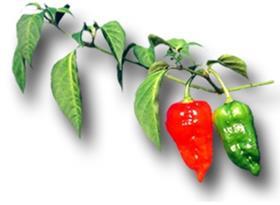
According to My Secret Kitchen, a national food tasting company, chillies are the number-one food trend for this year as the product category innovates and expands.
This follows a food trends report from Nestlé Professional, a marketing division of the global food business, which also declared 2013 the year of the chilli pepper.
At one time, if consumers wanted anything other than the common Jalapeño or wax variety, they had to go through specialist chilli-growing companies, ordering through the post and later online.
Now Tesco and Waitrose in particular are noted for selling a wider range of the product, a member of the nightshade family Solanaceae, with sales helped by the British becoming more adventurous with their cooking.
Expanding home-grown sector
Director and founder of the South Devon Chilli Farm, Steve Waters, says given the amount of chillies required by the UK processing industry as well as for retail, it is unlikely that the country will ever be self-sufficient in chillies, but the home-grown sectoris expanding.
“There is a growing market in different varieties of chillies that offer a range of flavours,” says Waters. 'People think of chillies as adding heat to a dish, but there are also many different flavours that they offer. It’s very versatile and can add value to other products, such as olive oils, chocolate and even jams.”
South Devon Chilli Farm grows around 160 varieties and is constantly trialling new ones. It recently launched a new range, called Extreme, to cater for fans of the hot stuff.
Waters, who recently hired two new managers to help with the company’s growth, says the UK niche chilli sector was an exciting place to be operating in with an explosion in growing techniques and new product development.
However, as Waters states, with land and weather issues (the chilli has to be grown in polytunnels), UK growers could not supply the amount of product demanded by processors but also retailers.
Moroccan demand
Although one would assume that India is the main exporter, it is actually China. Africa is another source for chillies, with Morocco in particular increasing its imports.
Grower and exporter Tizjara is looking to expand its supplies of chillies through all-year-round growing in the south of Morocco.
“At the moment there is an enormous demand for habanero chillies and the supply on the market is less,” says spokesman Hamid Haddouch.
“The Dutch cultivation is no longer on the market and from the Dominican Republic not much is arriving. It appears that from there more is going to America as well. We have with our own cultivation a unique position at the moment. Demand is high now, but we can stay ahead of this. Due to the increasing demand prices are increasing.
“This year we obtained our GlobalGAP certification. We will start a cultivation area in the far south of Morocco. Then we will be able to supply chilli all year round. Products we offer quite a lot are Rawit and Okra.
“Rawit is a small thin chilli and is many times hotter than common Spanish chilli. At the moment these are imported from Kenya. We will shortly start our own cultivation from Kenya [too].”
With so much activity in the chilli market, it’s certainly one that has the potential to get hotter.






No comments yet